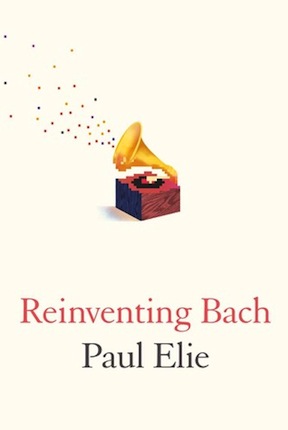At this point I should probably disclose that I am a big fan of the baroque composer’s music. In fact, that doesn’t quite do it justice. To me, Johann Sebastian Bach has composed music so extraordinarily beautiful, both in a melodic and technical sense and in such quantity that it is hard to believe any single human could have produced such work in a lifetime. I recently read a great quote on a friend’s blog (readnomore.wordpress.com) by Sergei Rachmaninov, which went
Music is enough for a lifetime, but a lifetime is not enough for music. – Sergei Rachmaninov

Nowhere is this more true then when I think of Bach’s music. I play the piano myself (recordings to follow, maybe) and love to start practicing by flipping open my book of the Well Tempered Piano and playing some of the first pieces from it. Describing the sense of listening to his music is not easy but what is most salient in a ‘Bach experience’ is that the music follows, common for the baroque era, a very strict tempo – rubato verboten. That is a big component of what comprises the unique ‘flow’ of his works. Bach’s timeless themes flow uninterruptedly into one and out of one another in the strictest flow of time like a flowing stream. Especially the Well Tempered Piano compositions, which were thought up solely for young students to practice their playing, offer unparalleled beauty in their seeming simplicity. The pieces seem so fundamental, and tellingly have found their way into the frameworks of all other music, that they stand almost as the axioms or basic rules of music. The realisation that Bach is everywhere brings a certain fascination with it once you start knowing some of his pieces really well.

The book ‘Reinventing Bach’ tells the fascinating journey of Bach’s life and compositions through time – how they have been re-discovered and re-interpreted over and over again, even making their way into Beatles’ (the middle part solo of ‘In My Life’ is one example as well as the trumpet solo in ‘Penny Lane’) and recent pop music. This is of course testimony to Bach’s genius. His works have proven timeless over and over again. At a time when he was threatened to be forgotten as other romantic composers aimed to look to a future filled with radical change, Felix Mendelssohn, came to the rescue and is now largely credited with reinvigorating Bach’s music and bringing it back to public life. The book mixes this effortlessly with giving more background on notable performers of Bach’s music as well. The story quickly departs from just Bach and his music and moves to Bach’s music as a part of the world. In the very beginning of the Book, the author starts by discussing Albert Schweitzer and his recording of the Toccata and Fugue in D Minor at length. Schweitzer was a master of Bach’s organ pieces and his recordings of them are treasures to this day. He also stood for the humanity often associated with Bach’s music through his charitable work and humble, selfless, pious life.

What raises his importance in the overall theme of the book are the contributions he made to recording Bach’s music for which he developed a special method, the Schweitzer Technique. This essentially sees a usual figure-8 microphone (those are the “unidirectional”, open to two sides ones) replaced by two small diaphragm condenser microphones pointed directly away from each other, giving the recoding two unique information sets rather than two, which are the same with one half just flipped in polarity. The author encourages his readers to listen to the mentioned recordings, which sets a dramatic tone for the beginning of the book, especially since one particular recording that is mentioned is from the onset of WW2. From here onwards, great performers and their recordings are the centerpieces of the book. This gives the reader an opportunity to learn about the lives and styles of playing of many great Bach performers such as the legendary Pablo Casals and Glenn Gould. Each brought with them a unique style and made the music relevant in their time such as when Casals refused to perform his impeccably played Bach Cello Suites in public for as long as the Spanish civil war lasted. Gould enraged record companies by refusing to give up humming to his playing, so you can still hear a Gould recording not just by his surprising interpretations but also by the faint sound of someone humming along to the music. In the end the book finally dives into a chapter any audiophile such as me will love: Are digital or analogue recordings ‘better’ and why. Overall, Paul Elie’s ‘Reinventing Bach’ gives the reader a sense of how much music has changed over time in how we continue reinventing its physical incarnations – from analogue and LP to digital and MP3 over to online streaming – while still playing the out-of-this-world beautiful compositions of a man who lived in Thuringia some 350 years ago.


Teleporting Bach – The Japan Bach Collegium in NYC | Kohlmann Notes
December 24, 2015[…] you may have read in my book review on Paul Elie’s Reinventing Bach, I am a huge fan of the baroque composer’s music, which is why this concert obviously […]
Yo-Yo Ma Plays Bach in Montréal - Kohlmann Notes
January 6, 2019[…] I just love Bach a little bit more than the other great musical geniuses and admitted as much in an earlier book review. In a slightly morbid thought-experiment, I sometimes find solace in the idea that if I were ever […]